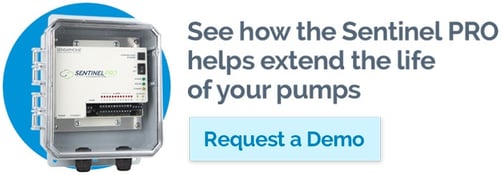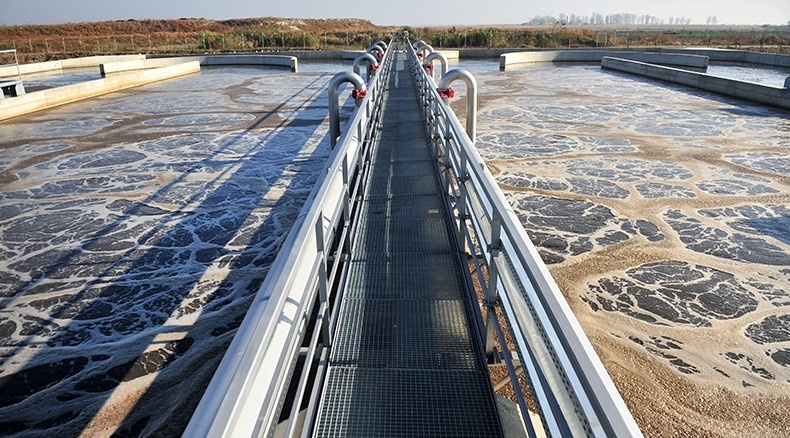
Businesses across all industries rely on consistent power to keep operations running smoothly. However, unexpected outages are becoming increasingly common, putting critical assets, sensitive data, and even lives at risk. A power failure alarm system provides immediate alerts during outages, enabling you to take swift action to safeguard your inventory, information, and property.
Recent statistics from the U.S. Energy Information Administration highlight the growing severity of power interruptions:• The average U.S. power outage duration more than doubled from 3.5 hours to over 7 hours in 2021.
• Power outages increased by 64% between 2011 and 2021 compared to the previous decade, with many incidents linked to extreme weather events like heat waves and hurricanes.
What were once rare occurrences, blackouts are now happening more frequently and lasting longer. In addition to complete blackouts, businesses also face brownouts—voltage drops that can cause equipment malfunctions. A power failure alarm system can alert you to both scenarios, giving you the opportunity to minimize disruptions and protect your operations.
The Financial Impact of Power Failure
Power outages can have devastating financial consequences for businesses, costing thousands—or even millions—in lost revenue and irretrievable asset losses. According to Information Technology Intelligence Consulting (ITIC), 98% of businesses report that a single hour of downtime costs over $100,000.Research by the Uptime Institute reveals a troubling trend:
- Between 2019 and 2022, incidents causing financial losses of at least $100,000 increased by 39%.
- Over the same period, the number of events resulting in losses exceeding $1 million also rose significantly.
- Business sector: Manufacturing plants risk product spoilage and equipment damage, while IT companies may face data loss or corrupted files.
- Duration of the interruption: Longer outages lead to greater losses.
- Seasonal timing: Power failures during peak business periods can amplify revenue losses.
- Nature of the products or services provided: Businesses relying on sensitive equipment or perishable goods are particularly vulnerable.
In critical environments like hospitals or research facilities, the stakes are even higher. Power disruptions can compromise refrigerators and freezers used to store vaccines, pharmaceuticals, and scientific samples, leading to irreversible losses. Patients may face life-threatening situations if essential equipment becomes inoperable or unsterilized due to a lack of power.
Investing in reliable power monitoring and alert systems can help mitigate these risks, ensuring businesses are prepared to respond swiftly and protect their assets.
Remote Monitoring System Detect Power Outages
A remote monitoring system can function as an effective power failure alarm system. While these systems are widely recognized for tracking environmental conditions like temperature, humidity, CO2 levels, and water leaks, many don’t realize they can also deliver immediate alerts during power outages.When a power failure occurs, the system promptly notifies designated personnel through phone calls, text messages, or emails. For businesses unoccupied during evenings, weekends, or holidays, a power outage might go unnoticed for hours or even days—by which time, valuable inventory could already be lost.
With a remote monitoring system, you can detect power outages early, respond quickly, and minimize their impact to maintain business continuity. These systems are versatile and suitable for a variety of applications, including:
- Medical refrigerators and freezers
- Food cold storage
- Heating and A/C systems
- Greenhouses
- Data centers and server rooms
- Livestock facilities
- Retail and hospitality businesses
Sensaphone Sentinel gather critical data and immediately alert personnel via phone, text, or email. These real-time notifications enable swift emergency responses, minimizing downtime and protecting vital operations.
Power Failure Alarms Serve in Continuity Plans
Remote monitoring systems that double as power failure alarms are essential tools in continuity planning. With advanced sensors to detect power disruptions, systems like the the Sensaphone Sentinel gather critical data and immediately alert personnel via phone, text, or email. These real-time notifications enable swift emergency responses, minimizing downtime and protecting vital operations.
In addition to real-time alerts, the Sentinel system securely stores data in the cloud, offering unlimited storage and preventing data loss during outages. Operators can access status updates through a mobile device to monitor power conditions across specific areas of a facility, ensuring informed decision-making even during emergencies.
The Sentinel system also functions as a data logger, maintaining detailed records of power outage events. It tracks key metrics such as the start of the outage, alert transmission, reception times, and other relevant details, providing a comprehensive view for monitoring and analyzing power failure incidents.
By integrating a power failure alarm like the Sentinel into your continuity plan, you can ensure timely responses to unexpected power disruptions.
Monitoring power consumption
In addition to detecting power outages, remote monitoring systems can also track power usage, particularly when combined with a Sensaphone Split Core Current Sensor. Maintaining an adequate power supply is critical for optimal equipment performance.
Insufficient current flow can hinder performance, while inefficient flow may signal underlying mechanical issues that could lead to equipment failure. Conversely, excessive current can generate excessive heat, potentially damaging equipment components.
Sensaphone Split Core Current sensors deliver accurate measurements within a range of 0–200A. When current levels fall outside preset high or low limits, the system sends immediate alerts, displaying the current value for quick assessment and corrective action.
Power failure alarm options
There are several types of power failure alarm systems available, each suited to different operational needs. Here's a breakdown of popular options:
1. Auto DialersAuto dialers are still in use in some operations to call a database of contacts and deliver a prerecorded message about a power failure. These devices use traditional phone lines and include onboard battery backups for reliability during outages. Since analog phone lines are highly dependable, messages are typically delivered without issue. However, many service providers are phasing out traditional landlines in favor of advanced technologies that may not support these systems.
2. Network-Based Monitoring Systems
Network-based solutions like the Sensaphone Web600 Monitoring System use an Internet connection to send power failure alarms via email or text. To ensure functionality during power outages, these systems require both a backup battery and a network with its own battery backup. Without these safeguards, alarms may fail to send if the network goes down alongside the power.
3. Cloud-Based Monitoring Systems
Cloud-based products such as the Sensaphone Sentinel Monitoring System offer enhanced reliability. Equipped with built-in battery backups, these systems can send alarms even if the network fails. The server continuously checks the device’s status, ensuring both power and network connections are operational, and sends alerts immediately if either goes down.
4. Cellular Modem Monitoring Systems
Monitoring systems with Cellular Modems are an excellent choice for independent operation. These battery-backed devices don’t rely on any network. As soon as power is lost, they instantly send alarms to notify users.
Wired or Wireless Options
Power failure alarm systems are available with hardwired or wireless sensors. A wireless power failure sensor eliminates the hassle of running wires. To ensure continued monitoring in the event of an outage, Sensaphone offers a Power Supply with Battery Backup to power 4-20mA sensors or any 24VC DC device requiring backup power. This device provides an uninterruptible power supply, allowing transducers to operate for up to 24 hours if the power source is interrupted.
A power failure can happen at any time, so being prepared is essential. If you manage equipment critical to operations or must store valuable products within certain temperatures, a power failure alarm system can provide peace of mind, helping to prevent financial losses and reduce downtime.
Don't let unexpected outages catch your business off guard. Invest in a reliable power failure alarm system to stay ahead of the challenge and ensure uninterrupted operations.
To learn more about how remote monitoring systems serve as power failure alarm systems and data loggers, read our blog Cloud-Based Data Loggers Offer Freedom to Remotely Monitor Environments.
Contact us to discuss how Sensaphone can serve as part of your power continuity strategy.








